Backpack and Digital Safety: A Complete Guide with Sara Miller, NP
August 12, 2024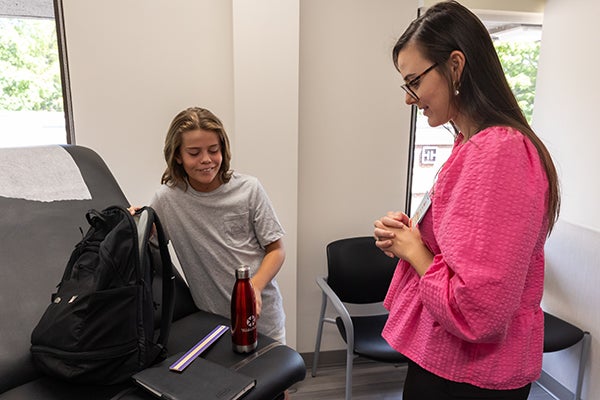
By: Sara Miller, NP
Categories: Primary Care, Children's
Tags: backpack, Back Pain, back strain, eye strain, macular degeneration
Let's just say "No" to America becoming the land of back and eye strain. With kids and adults headed back to school and work — after a lazy, beachy summer — many are bent down staring at devices, while carrying heavy bags for hours each day.
If your back, neck and shoulders are tense or your eyes are glazing over from tiredness, you can turn these symptoms around. Here are some helpful tips to help you navigate a healthy way to modern education and work.
How to Select the Right Backpack
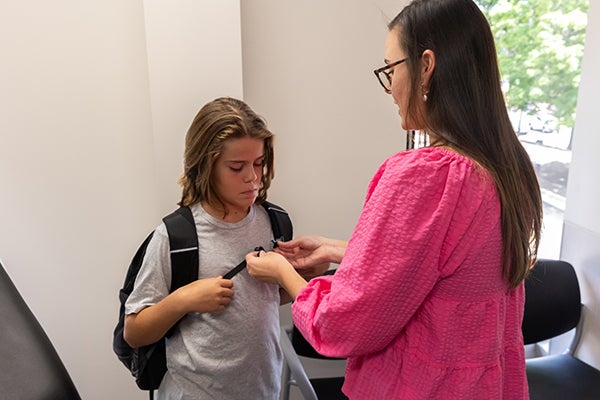
I recommend a lightweight, sturdy backpack the child or adult can pick up from the floor without help.
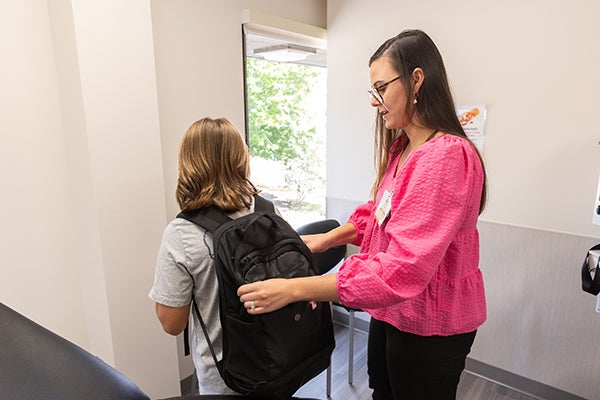
The backpack should have two wide straps with padding.
Padding on the back of the backpack is also a perk for cushioning the back against sharp book and device edges.
A reflective material for walking to alert drivers is also an excellent feature.
Backpack Features that Can Harm the Back
- Narrow and tight straps may dig into shoulders or cause posture issues.
- A backpack that is too heavy and bulky when empty should be avoided.
- While wheels may seem like a good option, some schools do not allow these. Furthermore, they can increase overall weight of the backpack.
Common Backpack Injuries
In a 2018 systematic review of 21 studies conducted on backpack injuries and reported in The Impact of Backpack Loads on School Children: A Critical Narrative Review, students on average, carried over 15 percent of their body weight in their backpacks. This resulted in biomechanical and physiological adaptations that increased risk for the following:
- Musculoskeletal injury
- Redness
- Swelling
- Back discomfort
- Posture issues
- Neck strain
- Back strain
Signs and symptoms of potential injury
Many children do not put their books in a locker. Instead, they carry their backpacks throughout the day.
Adults who carry backpacks may put them down at a desk for work, but if they carry them to run back and forth to meetings, injury can occur. Additionally, with aging, adults may experience bone and muscle loss which make them more susceptible to injuries related to carrying heavy backpacks.
Here are some signs and symptoms of bodily injury due to backpack strain:
- Fatigue
- Excessive slouching
- Muscle soreness
- Foot pain
- Redness
- Swelling
- Abnormal gait
- Respiratory distress
When to Know It's Just Too Heavy
The standard recommendation is 10 percent or less of a person's body weight. A test run is a good idea. Stuff the bag with whatever will be used on a regular basis and then weigh it. If the individual weighs 80 pounds, the backpack is too heavy if it is more than 8 pounds.
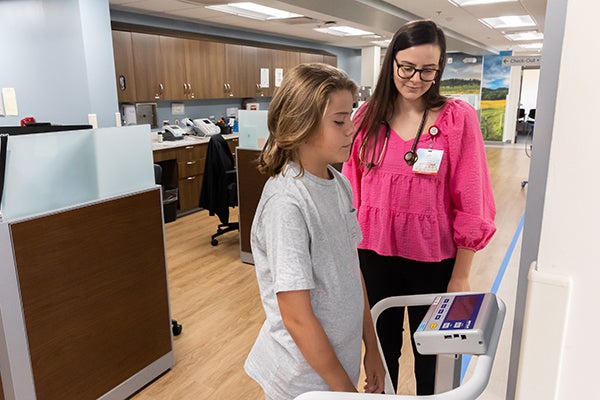
Regardless of the weight, unload that bag! Carrying around non-essentials throughout the day is too much to carry. If the item will not be used within a few hours, it is too much weight to carry around all day.
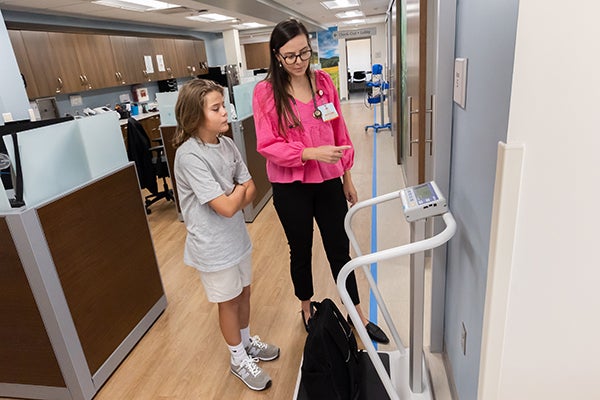
Eyes and Digital Devices
While loss of vision is not necessarily linked to excessive screen time, dry and irritated eyes are. Blink rates go down when attention to devices is abused. Instead of blinking every five seconds, many people blink every 15-20 seconds when looking at screens. Blinking is important because it spreads tears over the frontal surface of the eye.
Blue light passes directly to the retina and is a recognized risk factor for macular degeneration, a leading cause of age-related vision loss.
Here are some signs of eye strain that should signal it's time to take a break from digital devices:
- Blurred vision
- Dry or watery eyes
- Itchy, red or burning eyes
- Sensitivity to light
- Headaches
Digital Devices and Tech Neck
Tech neck is a term used to describe chronic back or shoulder pain caused by continuous straining of the neck or poor posture when slumping forward and looking down to use devices.
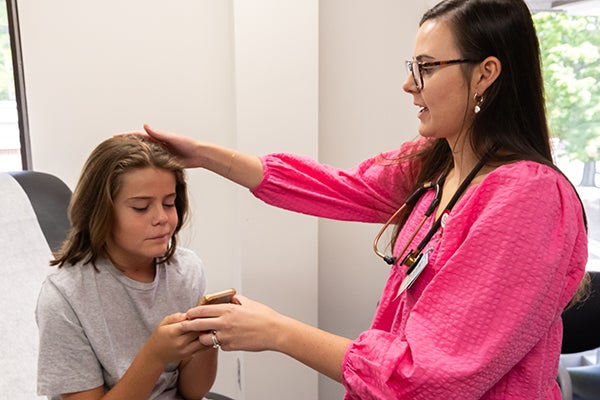
Sitting for long periods hunched over a digital device promotes worsening posture, which may lead to or worsen spinal and joint pain and muscular disorders.
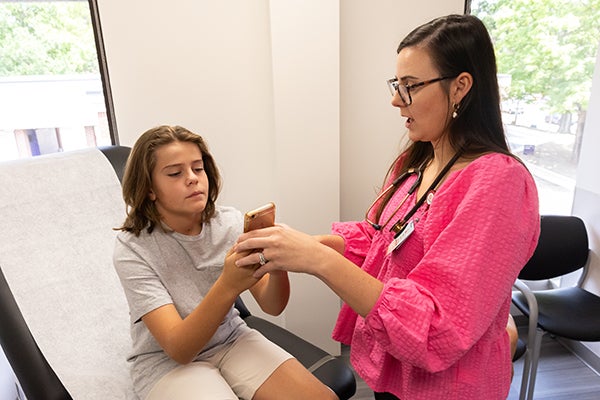
Safe device usage for a healthy body:
- Maintain good posture.
- Take frequent breaks, changing sitting positions and limiting screen time, so it is broken up throughout the day.
- Avoid tucking phones between ear and shoulder.
- Implement chin tuck stretches.
- Elevate the work station using sit-to-stand desks, or adjust screen height to prevent bending the neck downward.
- Get adequate sleep.
- Strengthen back muscles through exercise.
Carpal Tunnel and Tech Thumb
In a 2021 study published in National Library Medicine regarding 95 reviewed cases, using a smartphone for two hours a day or more was significantly associated with more occurrences of carpal tunnel syndrome. Those who held and/or used a device with both hands had a 7.8 times higher chance of developing carpal tunnel syndrome.
Here are signs and symptoms of injury to the wrist and thumbs:
- Numbness in hand, wrist or fingers
- Pain in hand, wrist or fingers
- Tingling
- Trouble holding hands to grip items (cups, phone, steering wheel, pens)
Much too Much Digital Time
The American Academy of Pediatrics has recommended no more than two hours of screen time for children and teenagers per day. Children under the age of two should not spend any time on digital devices.
The Impact of Too Much Digital Device Time
Too much screen time can have unintended consequences, including the following:
- It disrupts attention to relationships. There is a particular correlation between time on social media and anxiety/depression.
- It disrupts sleep patterns when used within a couple hours of bedtime. Blue light-emitting screen devices such as smartphones before bedtime can disrupt sleep patterns by suppression melatonin secretion. This directly affects brain development as we know a good night’s sleep is key. Those who stay up late texting are not only getting less sleep but lacking deep, rapid eye movement (REM) sleep essential for processing and storing information.
- It can impact vision.
- It can hinder learning of language and communication skills in children and adolescents.
- It is linked to obesity.
WakeMed Primary Care Can Help Assess and Treat Back and Eye Strain
WakeMed Primary Care features board-certified primary care, internal medicine and family medicine physicians conveniently located throughout the Triangle. Our exceptional and compassionate providers and care teams pride themselves on developing long-term relationships with their patients and their families.
Our desire is to establish a long-term relationship with you and your family, and that holds true for the annual wellness check and sports physical as well.
About Sara Miller, NP
 Sara Miller is a nurse practitioner with a broad range of clinical interests in pediatrics and young adults, survivorship primary care/preventative medicine and chronic care management. Miller earned her doctor of nursing practice at Baylor University in Waco, TX.
Sara Miller is a nurse practitioner with a broad range of clinical interests in pediatrics and young adults, survivorship primary care/preventative medicine and chronic care management. Miller earned her doctor of nursing practice at Baylor University in Waco, TX.
Miller believes that well-rounded, holistic patient care is focused on a firm understanding and collaborative effort between both the patient and provider. She understands that encouraging open dialogue and informing patients of the latest research empowers them to make educated decisions. Compassionate, evidence-based, preventive medicine are at the forefront for Miller as she administers care in an environment of warmth and empathy, so patients feel comfortable to seek care.
When not at work, Miller enjoys playing tennis and doing Pilates. She also loves exploring the outdoors, including the many North Carolina beaches — with her infant, husband and pup!
Disclaimer: The advice of individual medical providers serves as guidance from the specific provider and is not intended to establish standards of clinical practice or rules of law for WakeMed Health and Hospitals.